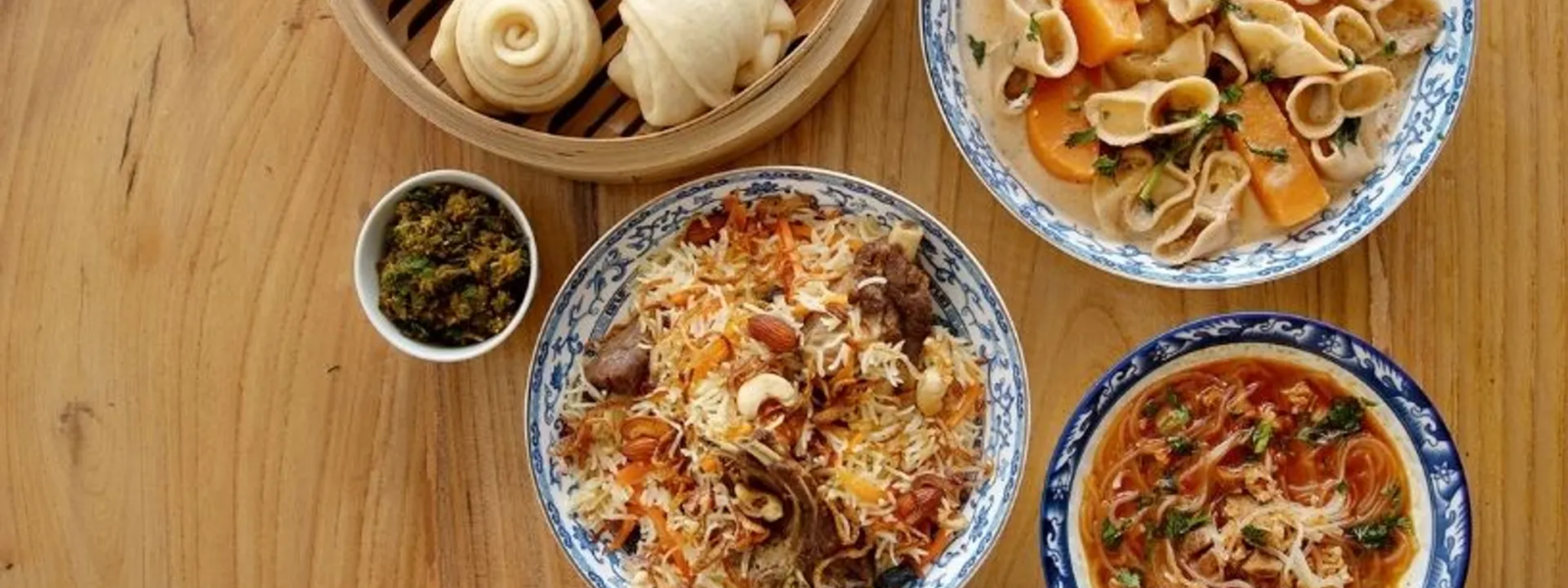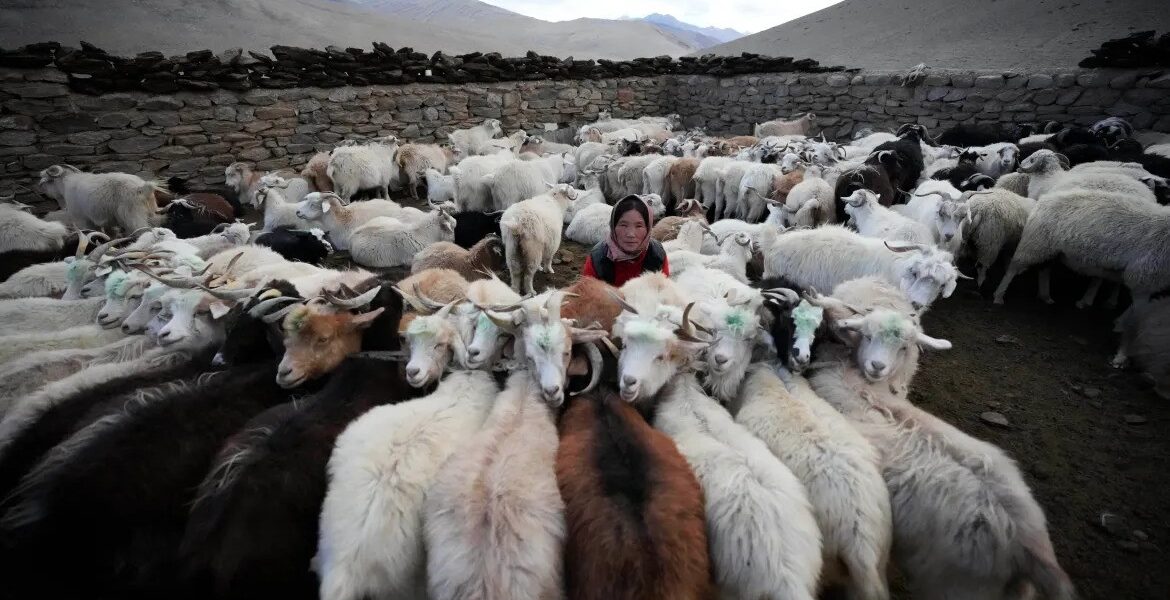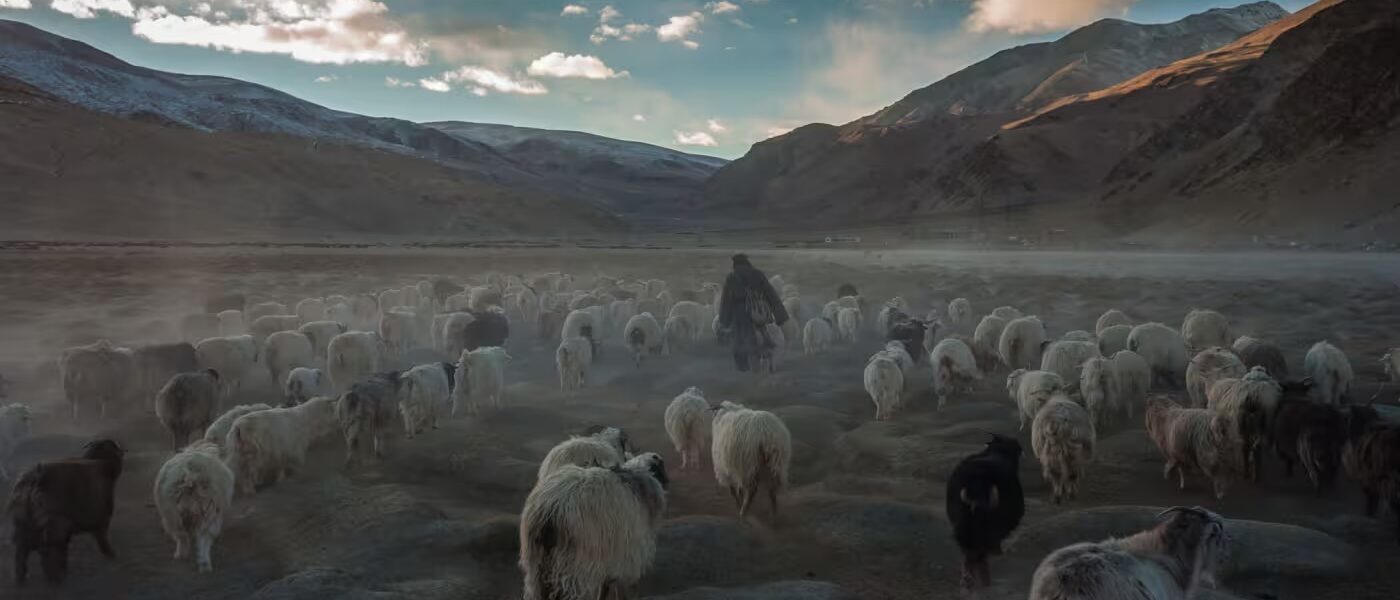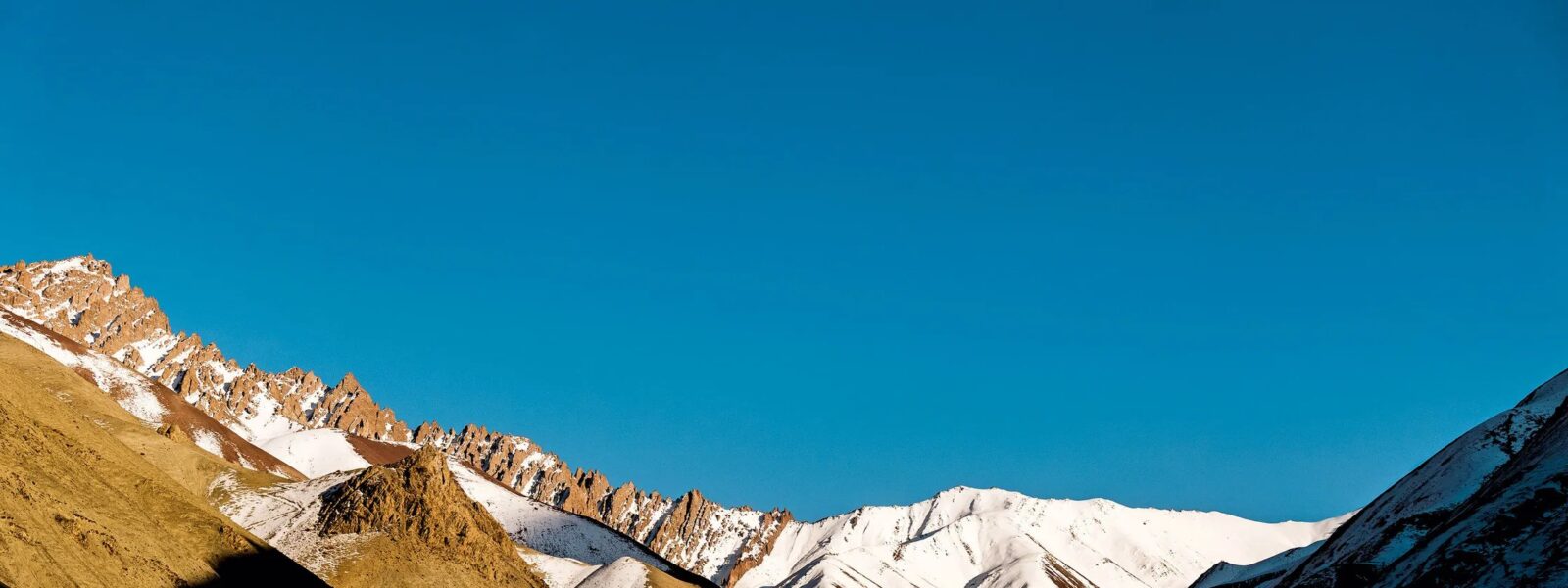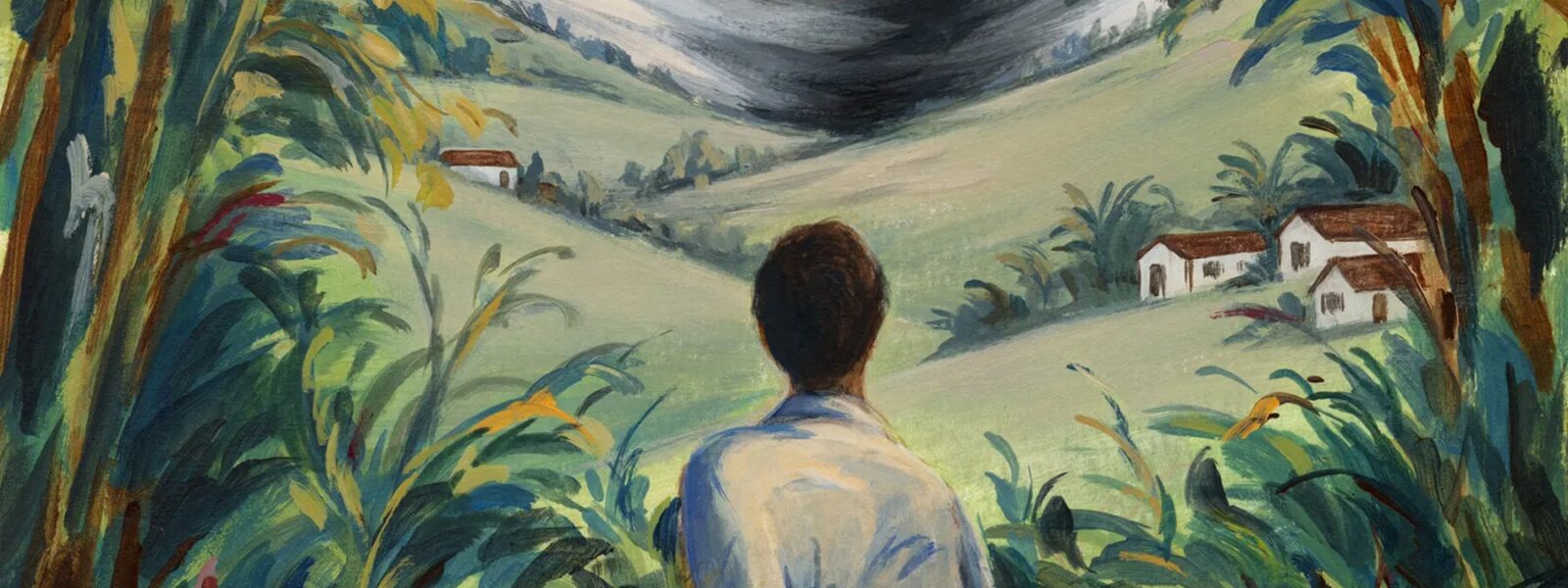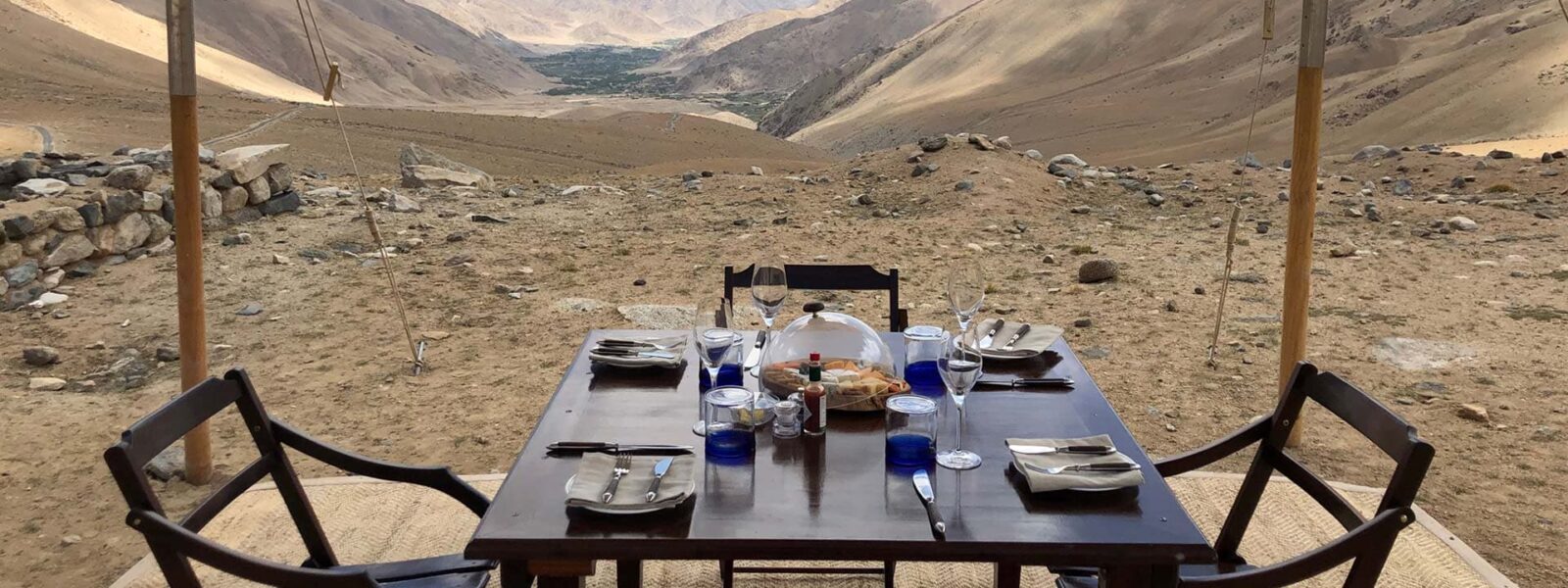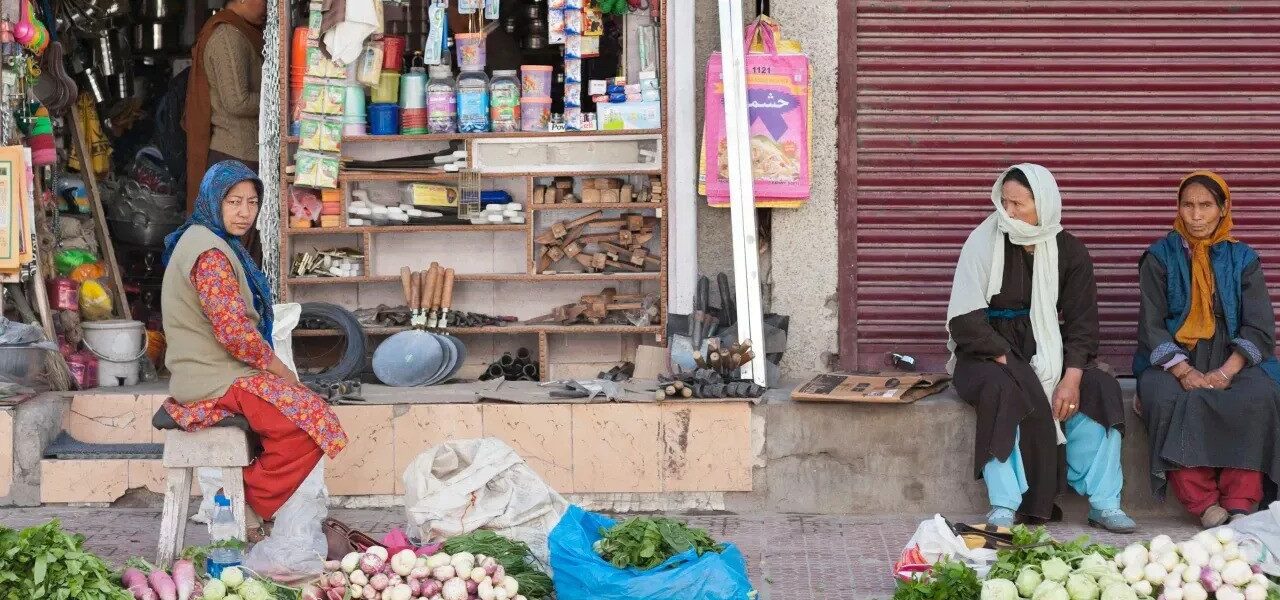Why Taste Matters in the Himalayas
The moment you step off the plane in Leh, the thin mountain air hits you like a whisper from another world. It steals your breath—and then, if you’re lucky, replaces it with the earthy aroma of something simmering in a distant kitchen. There’s no grand welcome committee in Ladakh, no tropical fruit juice in the airport lounge. What greets you instead is something far more grounding: a gentle landscape of muted browns, cobalt skies, and the soft smoke of barley roasting in a pan.
In the villages that hug the winding roads of this Himalayan desert, food is more than sustenance. It’s an offering, a memory passed through generations, and a quiet survival story. As a traveler, you won’t find flashy menus or Instagrammable brunch spots here. What you will find is a bowl of steaming skyu ladled into your hands by a stranger-turned-host, or a warm sip of salted butter tea as dawn breaks over the Indus Valley.
This is not just a food tour—it’s a trail into the soul of a people who have learned to grow, grind, and gather what little the high-altitude earth will give them. When the land only yields so much, every grain becomes precious, every meal intentional. And in the stillness of the mountains, the flavors seem to stretch longer on your tongue, etched into your memory like the prayer flags fluttering along the ridgelines.
I began my journey not with a guidebook, but with an invitation. A local family from the barley-growing village of Skurbuchan had agreed to host me for a few days. They didn’t have much, they said, but they had food—and that was enough. It was there, kneeling on a thick woolen carpet beside a clay stove, that I tasted the roasted, nutty richness of freshly ground tsampa for the first time. Their teenage daughter stirred it into warm tea, offering a bowl with both hands and a shy smile. I ate slowly, aware of how everything—flavor, temperature, rhythm—was shaped by place.
In Ladakh, food is a form of communication. It tells you about the wind, the soil, the silence of winter, and the generosity of summer. It whispers of borderlands and traditions, of Buddhist kitchens and Muslim home gardens. For those of us coming from fast-paced cities and supermarket abundance, this slowness—this deliberate simplicity—feels like a kind of luxury.
“To taste Ladakh,” a monk once told me, “is to sit still and listen.” And that’s what this trail is all about. This journey invites you to do more than eat—it invites you to connect, reflect, and rediscover what food can truly mean.
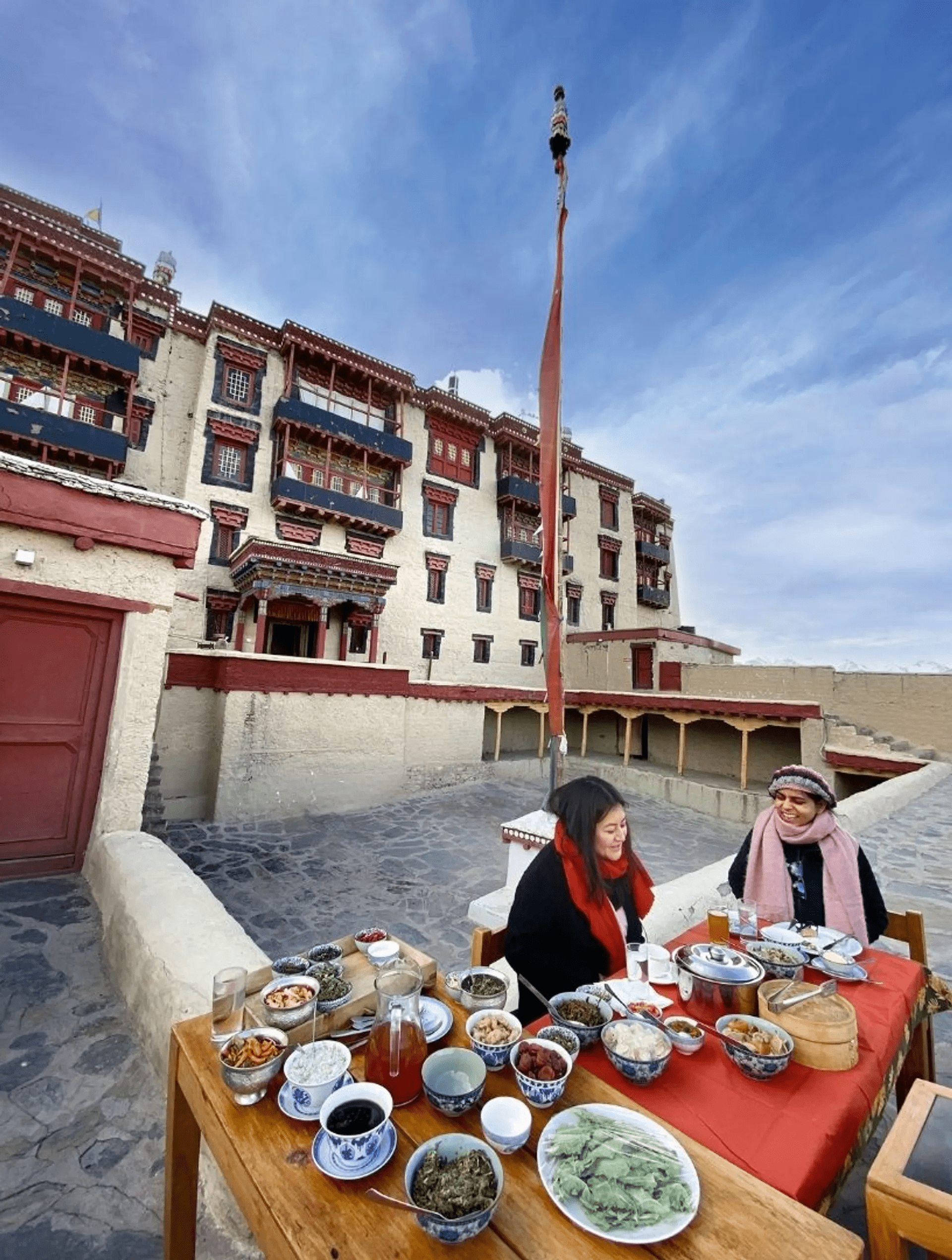
The Apricot Orchard Path: Sweet Encounters in the Apricot Valley
Spring arrives quietly in Ladakh. There’s no dramatic thunder or sudden bloom—just a slow unraveling of the earth. And then, one morning, the apricot trees wake up. Their gnarled branches, bare and wind-scrubbed all winter, suddenly burst into clouds of baby-pink and soft white. For a few precious weeks, the valleys of Garkone, Darchik, and Turtuk are transformed into ethereal wonderlands of color, scent, and warmth.
Walking through these apricot orchards is like stepping into a dream that smells of sunlight and sweetness. The villagers call them chuli—a word that rolls off the tongue as gently as the petals fall to the earth. These fruits are not just beautiful. They are survival. Dried, jammed, preserved, or simply eaten fresh from the tree, Ladakh’s apricots have sustained communities for generations. In fact, this part of the region is sometimes referred to as the “Apricot Valley of India.”
I was in the hamlet of Garkone during blossom season, and an elderly woman beckoned me into her garden. She didn’t speak English, and I didn’t speak Brokskat, but she offered me a woven basket and pointed to a tree. A few apricots had ripened early in the sheltered warmth of a sunlit corner. We picked in silence. I followed her back to her house, where she sliced one open and handed it to me. It was unlike any apricot I had ever tasted—richer, wilder, tasting faintly of the altitude and thin air.
These apricots—Raktsey Karpo, the famed white apricots of Ladakh—are gaining international attention. And yet, the harvesting process remains deeply personal and traditional. Villagers dry them on rooftops, turning them daily by hand. They crush kernels for oil, mash the fruit into preserves, and create a kind of sweet paste that’s eaten in winter with barley. Nothing is wasted.
During the Apricot Blossom Festival in April, the region comes alive with music, folk dances, and stalls selling homemade apricot products. If you happen to be there, don’t miss the chance to sip on apricot nectar under a canopy of blossoms. It’s the kind of slow, sensuous experience that makes you forget your phone and start listening to birds again.
What struck me most was how these trees, fragile and fleeting in their bloom, are rooted so deeply in Ladakhi life. They represent endurance, beauty, and nourishment—an elegant metaphor for the people who tend them. Whether you’re biting into a sun-dried apricot in July or wandering through a flowering orchard in April, the sweetness stays with you long after.
“The apricot tree is like a Ladakhi woman,” one villager told me with a smile. “Tough, giving, and beautiful when the time is right.”
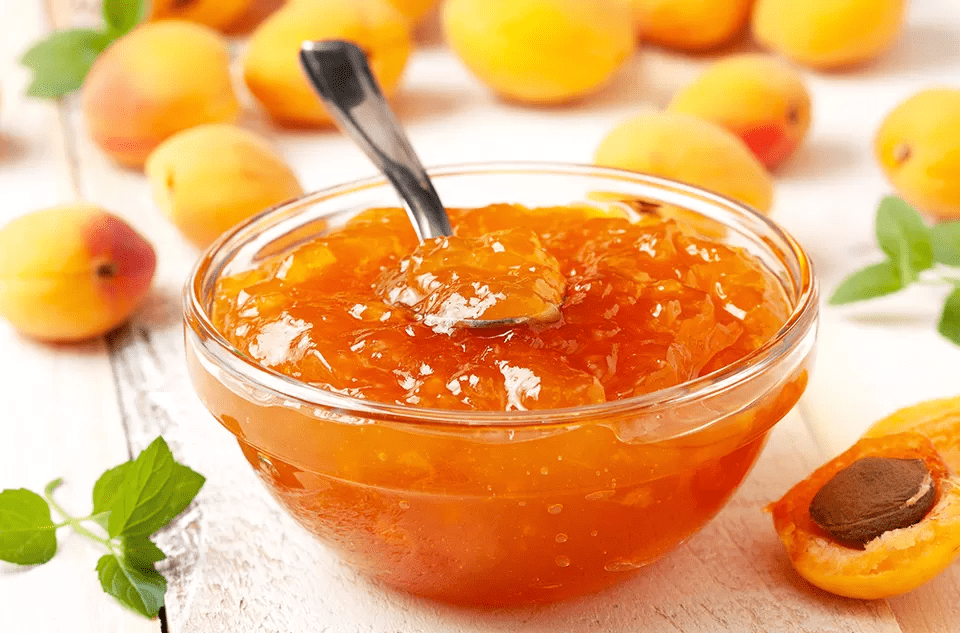
Barley Fields and Buttered Breads: Farming on the Roof of the World
Somewhere between the high passes and the deep gorges of Ladakh, there lies a patchwork of golden fields. They’re not vast like the wheat plains of Europe, but they shimmer with quiet pride. These are the barley fields—Ladakh’s ancient grain, its lifeline, and its culinary heartbeat. Grown at altitudes that defy most crops, barley is the food that built this land, one roasted grain at a time.
In the village of Temisgam, I followed a group of women to their fields at dawn. Their scarves fluttered like prayer flags, and their laughter echoed through the still morning air. One of them handed me a sickle, and with her guidance, I bent to the earth. The work was rhythmic, almost meditative. The barley, golden and crisp, crunched softly under our fingers. At break time, we gathered under a willow tree and drank a tea flavored with roasted barley flour—tsampa. It was nutty, warm, and incredibly grounding.
“Without barley, there is no Ladakh,” one of the women told me, pouring a little more tsampa into my palm. It’s true. In these high deserts, barley is more than a crop—it’s a constant. From breakfast porridge to barley bread, from chang (the fermented barley beer) to kholak (a nourishing barley dough kneaded with butter tea), every meal seems to begin and end with this humble grain.
Later that week, I joined a family in Skurbuchan to grind freshly harvested barley in a traditional watermill. The sound of stone grinding against stone was hypnotic, almost sacred. The resulting flour was toasted over a clay stove, mixed with butter, and served in a small wooden bowl. There was no garnish, no plating—just sustenance in its purest form.
Barley in Ladakh is also deeply ceremonial. During weddings and religious festivals, tsampa is tossed like confetti—a blessing, a prayer for prosperity. Monks in monasteries eat simple barley meals in silence, honoring the grain as both food and symbol. It’s not just about survival here. It’s about reverence.
One evening, under a starlit sky in a guesthouse near Lamayuru, I was served khambir—a thick, crusty Ladakhi bread—spread with apricot jam and a dollop of yak butter. Paired with warm chang, it was both dinner and dessert. I sat there in silence, tasting the day’s labor, the altitude, the care. No Michelin stars, no menu. Just earth and effort.
Barley may not be glamorous. It doesn’t shimmer like saffron or smell like truffle. But here in Ladakh, it is sacred. And when you eat it in the place it was born—harvested by hand, milled by stone, kneaded by someone’s grandmother—you taste something rare: dignity in simplicity.
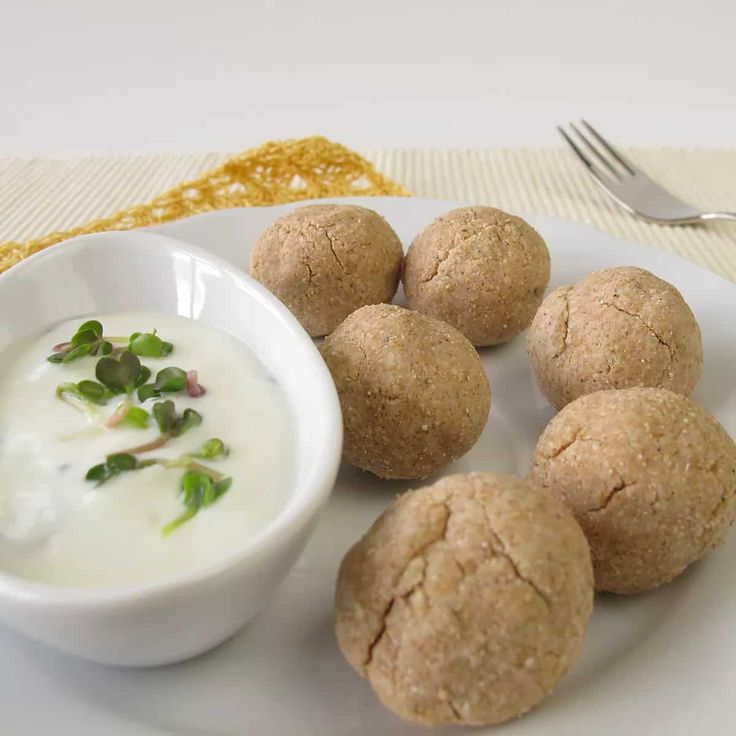
Butter Tea and Monastery Kitchens: The Rituals of Taste
The scent drifts down the corridor long before you step into the monastery kitchen—a rich, buttery warmth tinged with salt and smoke. It’s early morning in Hemis Monastery, and the lamas are already moving quietly through their rituals. Candles are lit, chants echo softly in the main hall, and in a back room, the ancient rhythm of food preparation has begun.
In Ladakh, the drink known as gur gur chai—or butter tea—is more than just a beverage. It is a gesture of hospitality, a cornerstone of monastic life, and a cultural emblem that survives even in the face of modernization. Prepared with yak butter, salt, and strong brewed tea leaves, then churned by hand in a tall wooden cylinder called a dongmo, this tea is not for the faint of palate. The flavor is earthy, savory, and unlike anything I had tasted before. But it grows on you. Quickly.
I was invited to share a morning cup with the head monk, who poured the steaming liquid into a small porcelain bowl. We sat cross-legged on a handwoven carpet, the silence between us broken only by the gentle hiss of boiling water and the occasional chant drifting in from the prayer room. He smiled and said, “This tea warms the soul before the sun.” And it did. The saltiness startled my taste buds, but the heat and the texture calmed something deeper inside me.
Later that day, I watched a younger monk prepare the next batch. He moved with the kind of focus you only find in spiritual practice—grinding roasted barley into tsampa, boiling the tea leaves, blending the butter. The entire kitchen smelled like history and devotion. When food is made with such attention, you taste more than flavor. You taste intention.
Butter tea is often served alongside khambir (thick Ladakhi bread), dried apricots, or even a few cubes of chhurpi—rock-hard yak cheese that softens slowly in your mouth. It’s not a snack. It’s a moment. In village homes, the ritual of preparing butter tea is a daily act of care. In monasteries, it becomes part of a meditative rhythm. And for the traveler, it’s a gateway into the Ladakhi way of life.
There’s a particular kind of quiet that fills you after drinking it. Maybe it’s the altitude, maybe the salt, or maybe the centuries of tradition infused in every cup. You don’t rush butter tea. You sip, reflect, and let the silence do the talking.
“We don’t drink it because it tastes good,” one nun in a nunnery outside Leh told me with a laugh. “We drink it because it makes us still.”
And that, perhaps, is the essence of Ladakhi food. It does not shout. It does not try to impress. It waits for you to slow down—and then offers you its heart in a bowl of something warm, humble, and unforgettable.
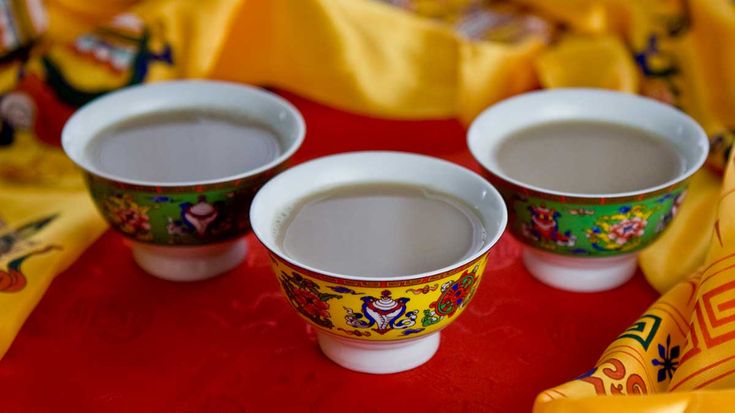
Homestay Hospitality: Eating with Ladakhi Families
If you truly want to understand Ladakh, skip the hotels and find a homestay. Not the kind polished for international websites, but the ones tucked behind apricot trees and prayer wheels, where children peek through the curtains and stoves glow with yak dung fire. This is where Ladakh’s most memorable meals are shared—not in restaurants, but around a floor mat, with fingers, smiles, and steaming bowls.
I arrived in the village of Tingmosgang just as the sun slipped behind the ochre cliffs. The family I stayed with welcomed me not with words, but with warmth. A cup of butter tea, a woolen blanket, and the comforting clatter of pots in the kitchen. I sat cross-legged on a carpet as the grandmother prepared chutagi, a Ladakhi pasta soup made with hand-rolled dough, root vegetables, and local spices. The room smelled of cumin and wood smoke.
Dinner was served in quiet reverence. No forks or knives, no separate plates—just one large pot at the center, shared by all. We passed ladles, tore pieces of khambir, and nodded in appreciation. This was not just a meal. It was a ceremony of belonging. I watched the teenage son mix tsampa with tea using his fingers, a ritual he’d likely repeated since childhood. Across from me, the mother laughed as she offered dried apricots, pressed with her own hands from last summer’s harvest.
What struck me most wasn’t the food itself—though it was hearty, nourishing, and surprisingly flavorful—but the rhythm of it all. Meals in Ladakhi homes unfold slowly, without interruption. No one rushes. Conversation is gentle, laughter frequent, and silence welcome. As an outsider, you’re not treated as a guest. You’re treated as part of the household, expected to participate, to learn, to share.
This is where the true heart of Ladakhi cuisine lives: not in recipes, but in relationships. Each dish carries the weight of memory—grandmothers’ hands, passed-down stone grinders, stories whispered over simmering pots. It’s a living history served three times a day.
“Our food is simple,” the father told me the next morning over breakfast. “But it comes from the land, and from us. That is enough.” He offered me gur gur chai and a slab of barley bread with yak butter. The view outside was of barley fields and snowcaps, but the warmth was here, in this little kitchen, in this shared moment.
For travelers from Europe, where farm-to-table is a philosophy, here in Ladakh, it’s simply the way things are. No packaging. No labels. Just food—fresh, seasonal, and full of soul. If you want to taste the true Ladakh, don’t look for a menu. Look for a family.
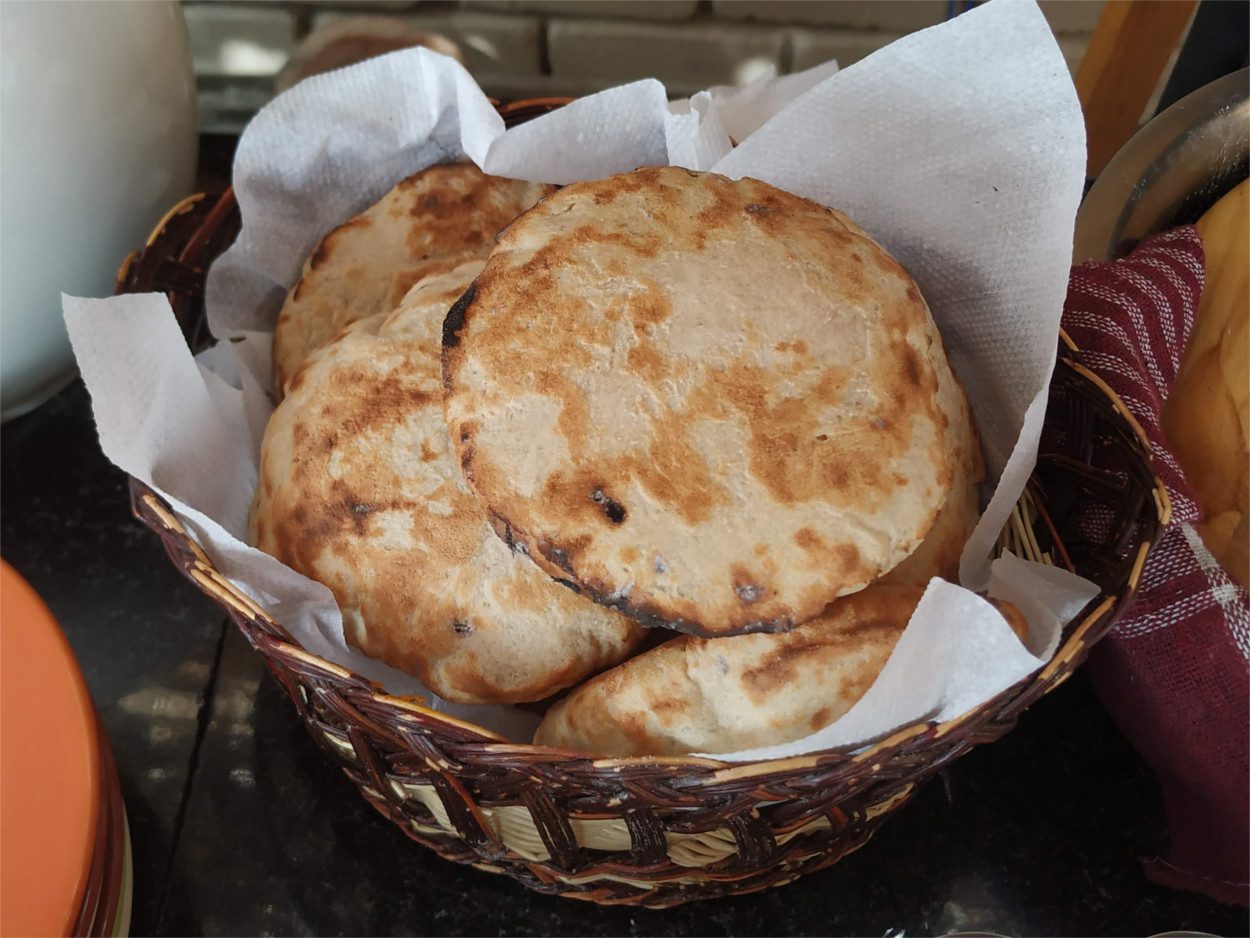
The Ladakhi Pantry: Ingredients from the Earth and Sky
There is a quiet poetry to the Ladakhi pantry. It doesn’t sprawl like a Western larder, overflowing with imported spices and packaged goods. Instead, it whispers in handfuls—pinches of mountain cumin, dried turnips stacked in a corner, blocks of rock-hard chhurpi cheese aging on the shelf. Here, food doesn’t come from trucks or supermarket shelves. It comes from the earth, the wind, and a deeply intuitive understanding of place.
In Leh’s Old Town market, I wandered past rows of local women sitting behind small displays of produce. Their baskets held treasures: freshly dug wild garlic, tiny purple potatoes that grow only in glacial valleys, and pungent dried herbs used to heal winter coughs. A few stalls further, a man was selling black cumin—not the kind you find in spice jars back home, but the aromatic, resinous seeds foraged high in the Himalayas. I bought a small packet and tucked it into my coat like a sacred charm.
Every item here has a story. Apricot kernels pressed for oil that softens skin and seasons salads. Barley roasted and milled by hand, then packed into sacks for the winter. Yak milk turned into butter, then clarified into ghee for months of snow. There is no excess in the Ladakhi kitchen—only what is needed, used fully, and respected.
Later, I visited a family in Alchi who proudly showed me their winter storeroom. Inside were dried spinach, preserved turnip greens, sundried tomatoes, and rows of clay pots sealed with cloth and string. Hanging from wooden beams were strings of tsestalulu, a native variety of Ladakhi chili. The pantry felt more like a gallery—each item a carefully tended sculpture of survival.
“We live with the seasons,” the grandmother told me. “When the roads close, we open this room.” In that moment, I understood the depth of connection between Ladakhis and their ingredients. These foods are not just sustenance. They are continuity, security, and heritage. A Ladakhi pantry is, in many ways, a map of the land itself.
What fascinated me most was the ingredient philosophy: use what grows. Celebrate the rare. Respect the small. This is not the kind of pantry that changes every season with global trends. It is grounded—both literally and culturally. For travelers from Europe, where farmers’ markets have become lifestyle statements, Ladakh offers something more intimate. Here, ingredients are not curated. They are cherished.
So when you eat in a Ladakhi home—whether it’s a spoonful of lentils or a handful of roasted barley flour—remember that what you taste is centuries old. You’re tasting soil, sky, sun, and snow. You’re tasting a pantry shaped by prayer flags and patience. And above all, you’re tasting resilience.
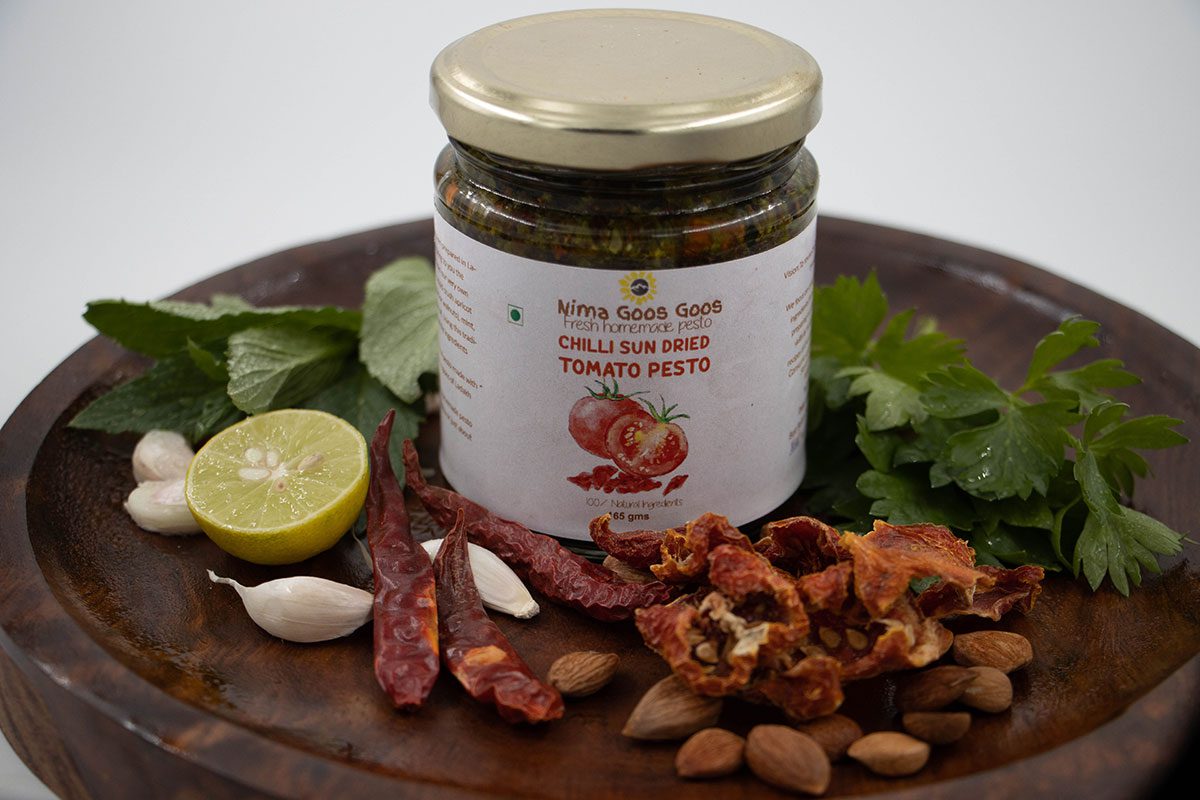
Where to Taste: Planning Your Own Culinary Trail
Ladakh isn’t a place you explore with a checklist. It’s a place you taste, slowly, one valley, one village, one shared meal at a time. For those dreaming of a culinary journey that goes far beyond restaurants and recipes, the high Himalayan region offers a trail of flavors that are rooted in landscape, shaped by altitude, and seasoned with tradition.
Start in Leh, the capital, where the pace is slightly quicker but the connections are just as heartfelt. Visit the Old Town market to sample dried apricots, yak cheese, and tsampa flour. Don’t miss the early morning stalls selling chhang (barley beer) in recycled plastic bottles—yes, it’s homemade, yes, it’s safe (mostly), and yes, it’s delicious. For a gentle introduction, try the small teahouses near the Shanti Stupa, where locals sip butter tea while gazing out at the Stok range.
Then move west to Skurbuchan or Temisgam, where the barley is grown and harvested by hand. Arrange a homestay through local networks or eco-tour operators and ask to help with dinner. Most families will be delighted to show you how to knead khambir dough or stir lentils over a clay hearth. It’s not just cooking—it’s storytelling through food.
If your journey takes you north toward Turtuk or Garkone, time your visit with the Apricot Blossom Festival in early April. Stay in a village guesthouse and follow the scent of fruit to its source: gnarled apricot trees heavy with white and pink flowers. This is one of the most beautiful—and least commercial—food festivals in India. You’ll sample homemade apricot syrups, dried fruit, chutneys, and maybe even take part in the harvest.
For those interested in spiritual flavors, plan a stop at Lamayuru Monastery or the serene nunnery in Rizong. Monastic kitchens serve food that is simple, sacred, and deeply grounding: barley porridge, salted tea, fresh greens in season. If you’re respectful and curious, you may be invited to join a communal meal or help stir the tea in a dongmo.
“This is not a food tour,” I often remind travelers. “This is a cultural immersion through food.” And unlike cities built for tourism, Ladakh won’t lay it all out for you on a plate. You’ll have to ask questions, accept invitations, and travel slowly. But the reward is unmatched.
Build your own route through villages that still thresh barley by hand, dry their apricots on rooftops, and offer guests warm tea before they know your name. Whether you hike from Yangthang to Hemis Shukpachan, or drive from Leh to Dha, let food be your compass. Follow the scent of baking bread, the steam rising from monastery pots, the quiet joy of shared meals.
This is Ladakh’s culinary trail—not marked on maps, but written into the hands of its people. It’s not fast. It’s not curated. But it will stay with you far longer than any guidebook ever could.
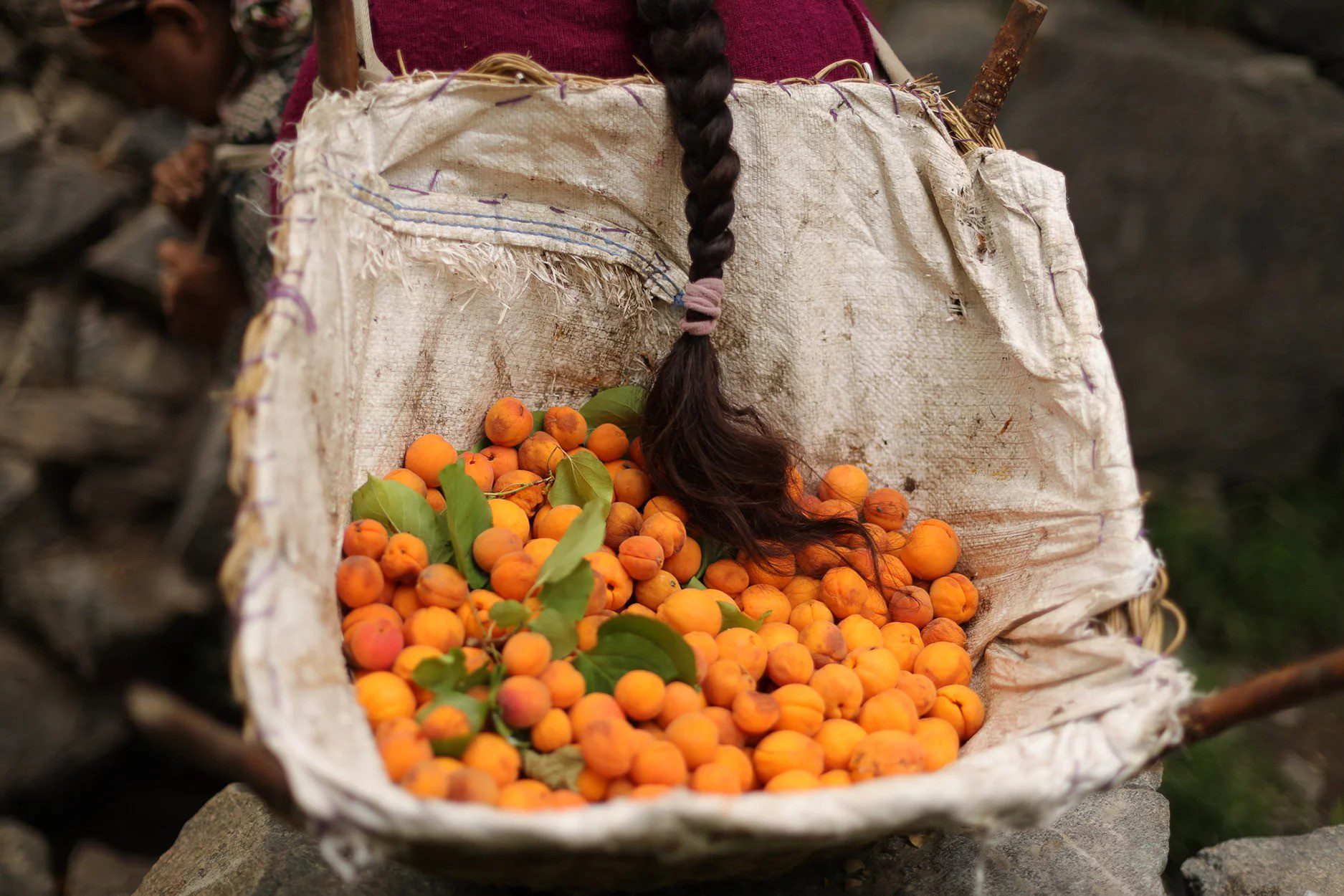
Final Thoughts: The Flavor of Stillness
Ladakh doesn’t reveal itself quickly. It waits. It listens to your footsteps on its dusty paths, watches how you hold your tea, and only then begins to open. In the same way, Ladakhi food doesn’t dazzle at first glance. There are no dramatic spices, no golden crusts or foamed reductions. Instead, what you find is something slower, more elemental—meals built on patience, earth, and silence.
There are flavors I carry with me still: the smokiness of roasted barley, the tang of dried apricot soaked in butter tea, the salty warmth that lingers after a bowl of chutagi. But more than any dish, I remember the quiet. The kind of quiet that wraps around you as you share a bowl with someone who doesn’t speak your language, but knows exactly how hungry you are.
“Food teaches us how to be still,” a monk in Rizong once told me, ladling barley porridge into his bowl. “In stillness, you taste more.” I wrote it down in the margins of my notebook, but I didn’t need to. The truth of it stayed with me.
In the frenzy of modern travel, we are told to see more, do more, eat more. But in Ladakh, less becomes a kind of luxury. One pot meal. One cup of tea. One valley. No Wi-Fi. No photos. Just presence. And it is in that presence that taste comes alive—not just in your mouth, but in your memory.
For travelers from Europe seeking something real, something unpolished and rooted, Ladakh offers a rare invitation: to slow down, to listen to stories that rise with the steam of a village kitchen, to eat what the earth allows, and to feel, truly feel, the flavor of stillness.
You won’t leave Ladakh with a recipe book or a list of famous restaurants. You’ll leave with something far more valuable—a memory of shared warmth, of wind through barley fields, of apricot blossoms brushing against your shoulder, and of food that came not from convenience, but from care.
When the world feels loud again, return to that memory. Close your eyes. Taste the salt, the barley, the quiet. And remember: the best meals are often the simplest ones—the ones eaten in silence, with people whose names you may forget, but whose generosity you never will.
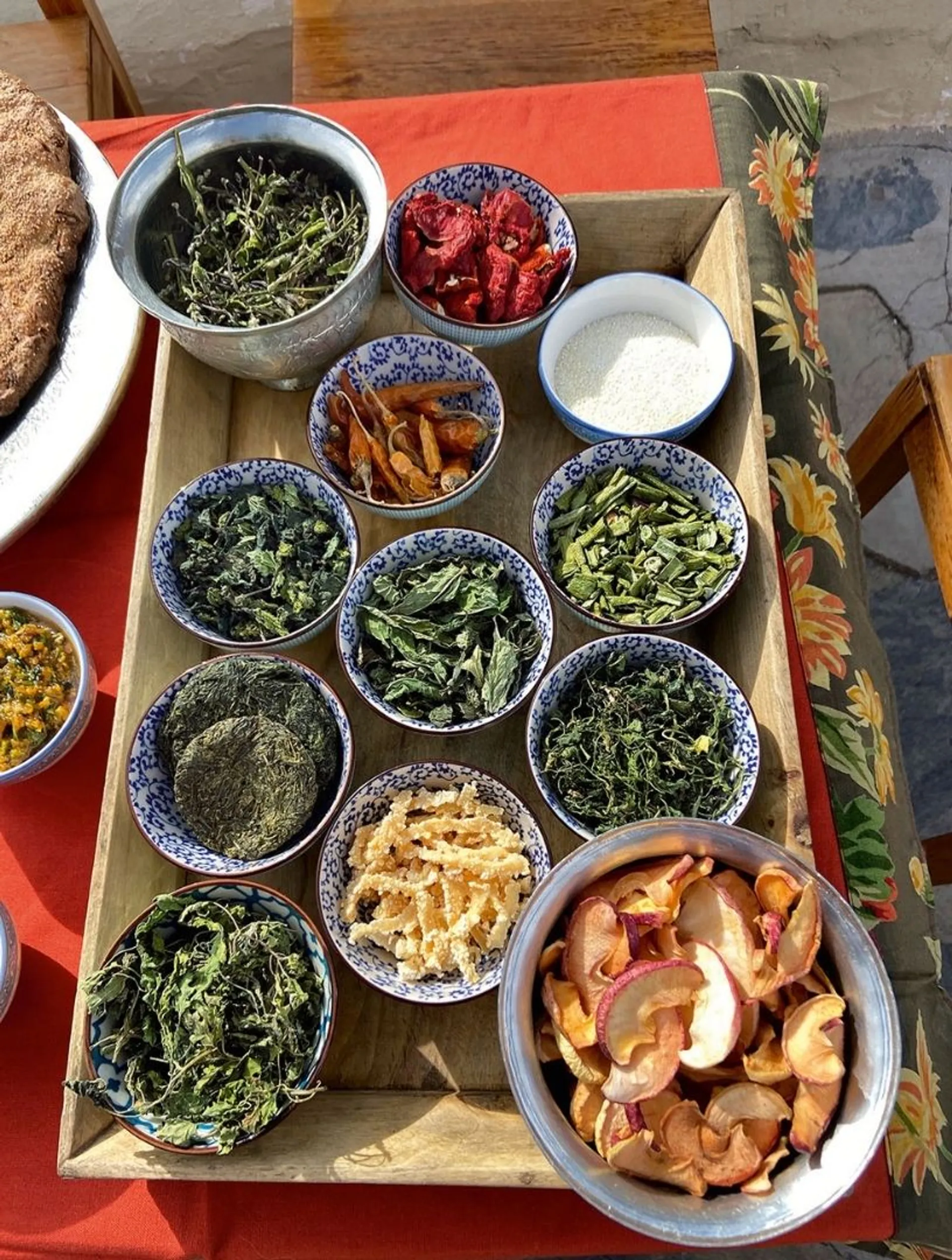
About the Author
Elena Marlowe is a travel columnist, slow food advocate, and passionate explorer of hidden culinary traditions across the world’s most remote landscapes. With a pen in one hand and a cup of butter tea in the other, she seeks out stories that linger longer than photographs.
Elena specializes in writing immersive, narrative-driven food columns that invite readers to slow down, taste deeply, and travel meaningfully. Her work captures the quiet power of shared meals, mountain kitchens, and the flavors of forgotten places.
She believes that the best journeys are those that begin with a question and end with a shared bowl of something warm.

